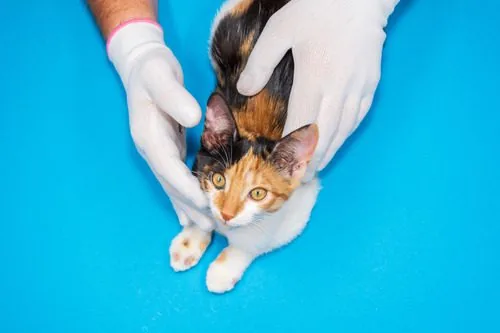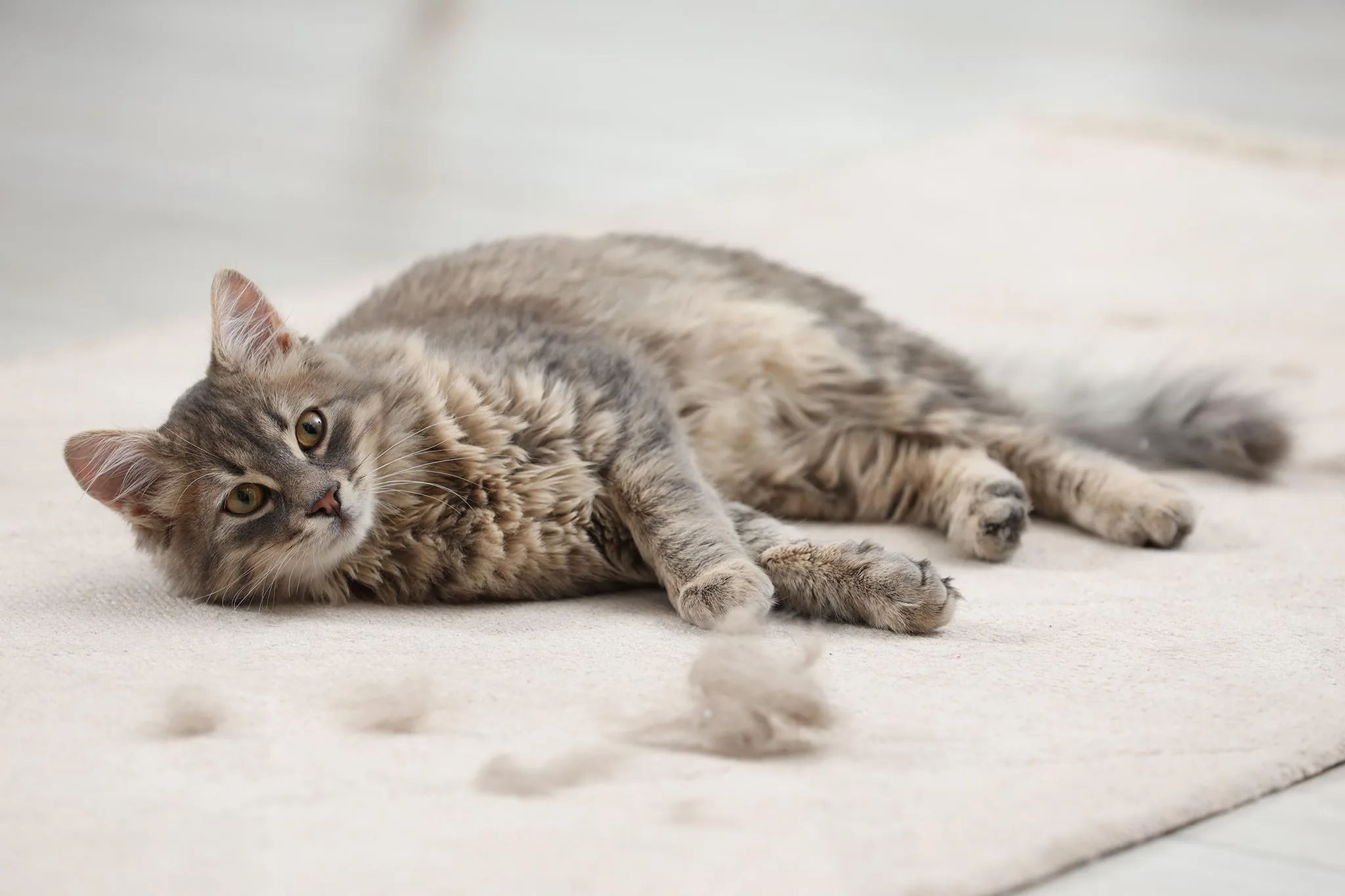
Ringworm Infection in Cats: What You Need to Know
If you’ve noticed odd patches of hair loss, flaky skin, or circular sores on your cat, you’re not alone in your concern. Many pet owners are surprised to learn that ringworm infection in cats is more common than it sounds—and it has nothing to do with worms. This fungal infection can spread quickly among cats, other pets, and even people, which is why early recognition and professional care matter. In a city like Boston, where many residents live in close quarters with their pets, awareness and quick action make a significant difference. If you think your cat may have ringworm, Back Bay Veterinary Clinic can help. Please call (617) 247-2273 to schedule an appointment.

What Is Ringworm Infection in Cats?
Ringworm infection in cats is a skin disease caused by a group of fungi known as dermatophytes. Despite the name, it has nothing to do with actual worms. Instead, the term “ringworm” comes from the ring-like appearance of the lesions that often form on the skin.
The Most Common Cause: Microsporum canis
The most common fungus responsible for this infection in cats is Microsporum canis. This fungus thrives in warm, humid environments and can live on surfaces, grooming tools, and bedding for extended periods. Because it’s zoonotic, ringworm can spread between cats, dogs, and humans, which makes prompt diagnosis and professional veterinary care especially important.
Why Early Detection Matters
While ringworm infection in cats doesn’t typically cause severe illness, it is highly contagious and can become a persistent problem in multi-pet households or shelters. The fungi attack the keratin found in the outer layers of the skin, claws, and hair, leading to symptoms that may mimic other skin conditions. This is one reason why testing is so important before beginning any treatment. If you suspect your cat might have ringworm, contact your veterinarian for guidance and support.
Recognizing the Signs of Ringworm Infection in Cats
Symptoms of ringworm infection in cats can vary depending on the severity of the condition and the individual cat’s immune response. In many cases, the signs are subtle at first and may be mistaken for other common skin problems. These include:
- Circular areas of hair loss, especially on the head, ears, and front legs
- Scaly, flaky, or crusty skin in affected areas
- Mild to moderate itchiness
- Broken or brittle hairs
- Redness or inflammation
- Lesions that look like rings, though not all cats develop this classic symptom
Some cats may carry the fungus without showing obvious symptoms. These asymptomatic carriers can still spread the infection to other animals and people, especially in shared spaces. Kittens, senior cats, and those with weakened immune systems are more susceptible to more severe infections. If you notice any unusual changes in your cat’s coat or skin, it’s important to have them examined by your veterinarian.
How Ringworm Spreads in Multi-Pet and Urban Environments
The contagious nature of ringworm infection in cats makes it especially challenging in environments with multiple pets or high levels of interaction, such as grooming facilities, shelters, or urban homes with limited space. The fungal spores are remarkably resilient and can survive on surfaces and in the environment for over a year. Common modes of transmission:
- Direct contact with an infected cat or animal
- Indirect contact through contaminated bedding, brushes, collars, or furniture
- Shared spaces like litter boxes, carpets, or pet carriers
In Boston, where many households include indoor-only cats, it may seem less likely that a fungal infection would occur. However, ringworm doesn’t require outdoor exposure to spread. Spores can be brought indoors on clothing, shoes, or other pets, which is why even strictly indoor cats can contract the infection. Regular cleaning and awareness of any skin changes in pets help reduce the risk.
Diagnosing Ringworm Infection in Cats
Because ringworm can mimic other dermatological conditions such as allergies, mange, or bacterial infections, accurate diagnosis is essential. At Back Bay Veterinary Clinic, your veterinarian will perform a thorough exam and recommend the most effective testing methods.
Diagnostic Tools and Techniques:
- Wood’s Lamp Examination: Some strains of ringworm fluoresce under a special ultraviolet light.
- Fungal Culture: Hair and skin samples are placed in a medium that promotes fungal growth; this is considered the gold standard.
- Microscopic Examination: Infected hairs can be examined under a microscope for fungal spores.
- PCR Testing: A more advanced and quicker method to detect the fungal DNA.
Your veterinarian will choose the most appropriate diagnostic approach based on your cat’s symptoms and history. It’s best not to attempt any treatment until a confirmed diagnosis has been made, as incorrect care may prolong the infection or spread it further.
Treatment Options for Ringworm Infection in Cats
Once your cat has been diagnosed with ringworm, your veterinarian will develop a treatment plan that addresses both the infection and environmental management. Treatment usually involves a combination of topical therapy, oral antifungal medication, and strict hygiene protocols.
Treatment Approaches
- Topical Antifungal Creams or Shampoos: Applied to affected areas or used as a full-body treatment to reduce surface spores.
- Oral Antifungal Medications: These are prescribed to treat the infection systemically and are often used for moderate to severe cases.
- Environmental Cleaning: Regular disinfection of surfaces, bedding, grooming tools, and any shared spaces is necessary to prevent reinfection.
Because the fungal spores are so persistent, follow-up testing may be required to confirm the infection has cleared. Treatment can take several weeks or even months, depending on the severity of the case and the pet’s overall health. Compliance with the treatment plan and follow-up care is key to successfully eliminating ringworm infection in cats.
Tips for Preventing Future Outbreaks in Your Home
After addressing an active case of ringworm, prevention becomes the next important step. Managing the environment and monitoring other pets in the household can help reduce the chances of reinfection or spread. Below are some steps you can take to prevent outbreaks in your home:
- Isolate new or infected pets until cleared by your veterinarian
- Regularly clean and disinfect pet bedding, toys, and grooming tools
- Vacuum frequently to remove hair and skin flakes
- Wash your hands thoroughly after handling infected pets
- Schedule regular veterinary checkups, especially for kittens and senior cats
If your cat has been treated for ringworm, your veterinarian may recommend rechecking cultures to confirm the infection has fully resolved. Cats can sometimes appear better before the fungus is completely eliminated, which makes ongoing testing and monitoring important.
The Importance of Professional Diagnosis and Treatment
Because ringworm infection in cats can spread easily and linger in the environment, professional care ensures a targeted, effective response. Attempting to manage the infection without proper diagnosis often leads to prolonged symptoms, misdirected treatments, or reinfection. At Back Bay Veterinary Clinic, we use advanced diagnostics and a tailored treatment approach to manage ringworm infection in cats. If you suspect your cat may have ringworm, please call (617) 247-2273 or make an appointment. Addressing skin issues early helps protect your cat, your household, and other pets in the community.
Recent Posts
- « Previous
- 1
- 2
- 3
- 4
- Next »










